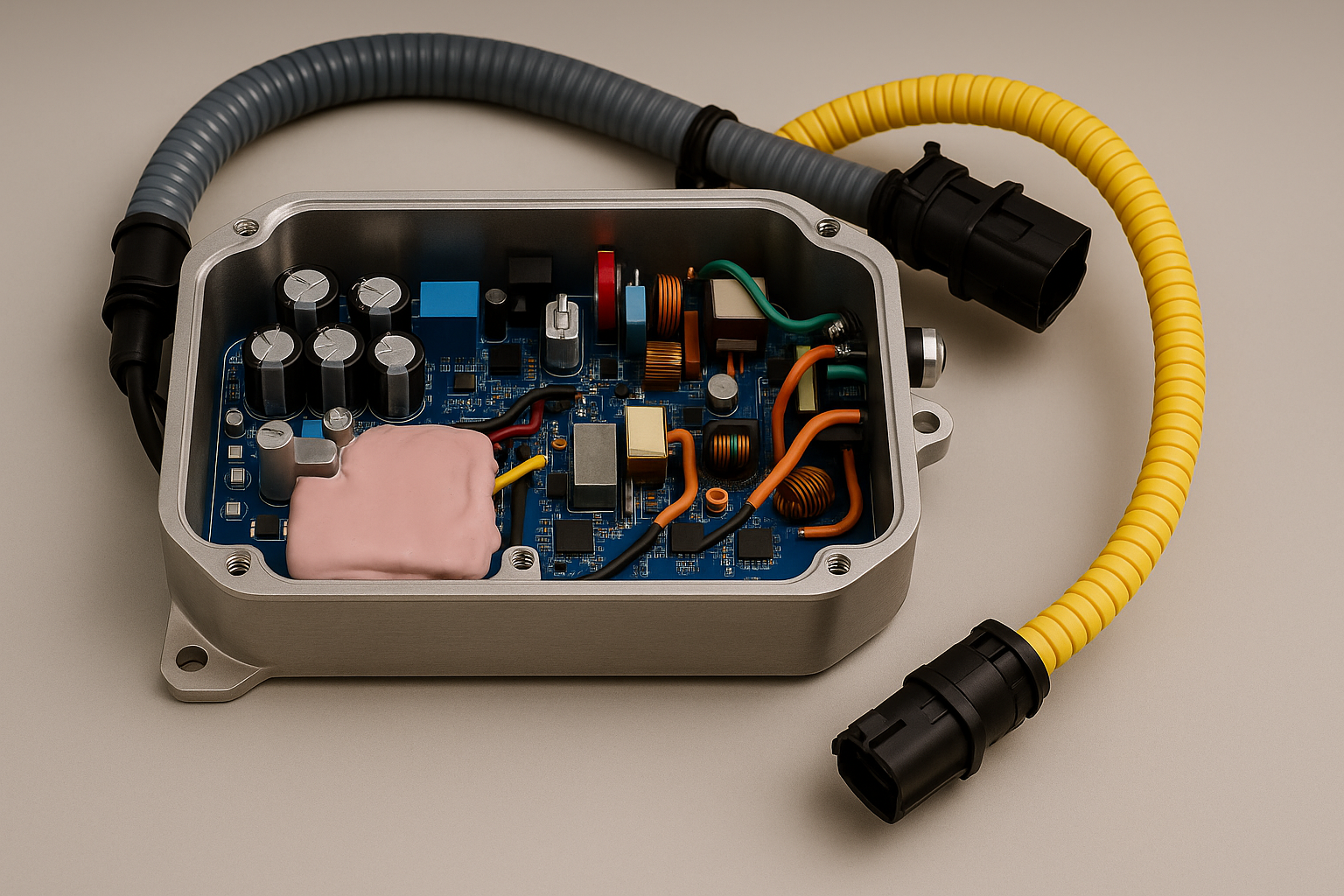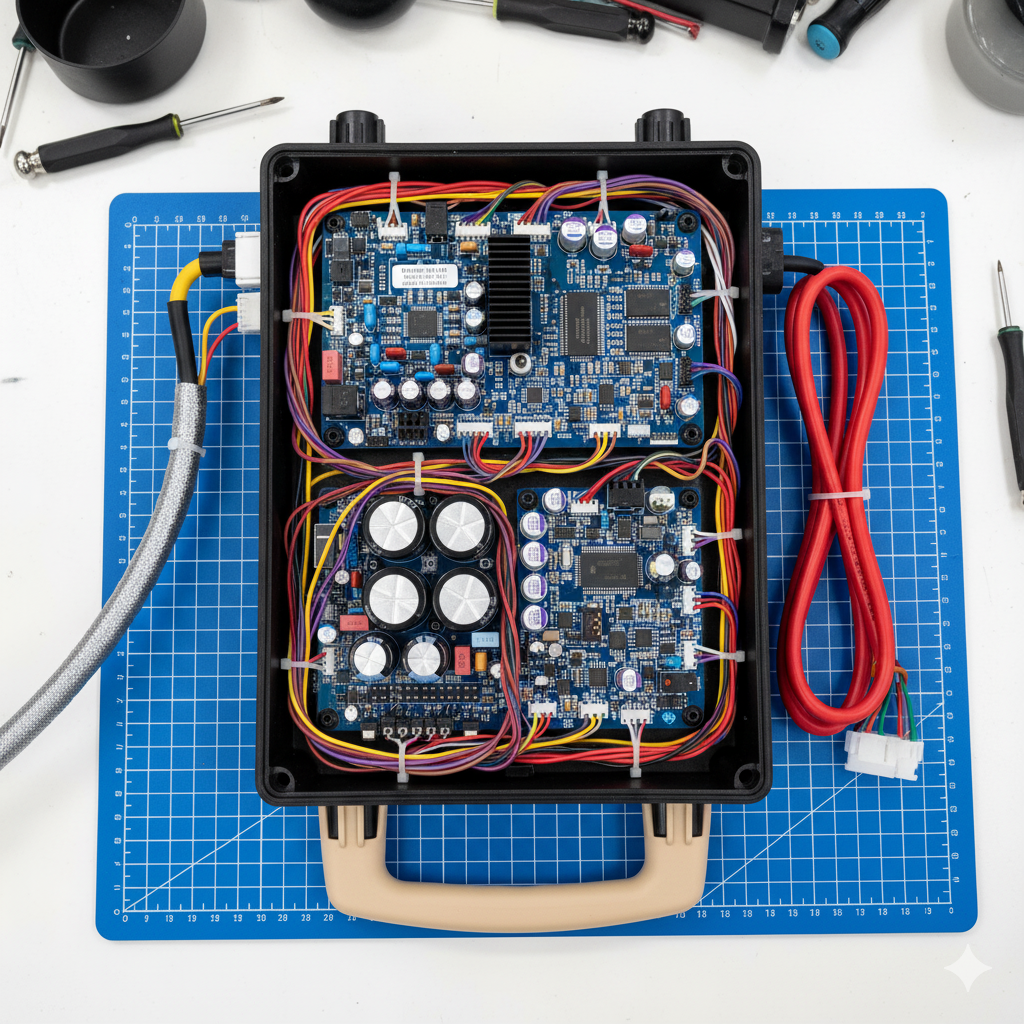Wire Cable Harnessing For Complex PCBA & Box Builds

5
In-House Wire & Cable Harnessing for Complex PCBAs &Box-Builds
Most EMS providers outsource wire and cable harnesses—or ask you to source them. That adds hand-offs, MOQs,and weeks of coordination when builds are most fragile. Bringing wire & cable harnessing in-house removes the drag. One team owns design, build, test, and mechanical fit—tightly integrated with your PCBA and box-build lines.

Buyer Outcomes of In-House Wire & Cable Harnessing
- Faster NPI. Length, routing, or connector changes don’t wait on a separate vendor queue; harness design → build → install happens inside the same program team.
- Stable FPY in high-mix. Crimp validation, splicing discipline, continuity checks, and inline EOL testing stop intermittent opens/shorts that wreck LVHM yields.
- Real traceability. Each harness ID ties to a finished-goods serial; MES checkpoints block downstream movement until tests pass.
- Lower cost-to-serve. Fewer expedites and less scrap from mis-pinned, mis-labeled, or ill-routed looms.
Three pillars that make it work for complex PCBAs & Box-Builds
1) Harness manufacturing (repeatable quality)
- Multibranch cable & wire harnesses including optical fiber, hybrid fiber/electrical looms, and high-temp insulations.
- Automotive-grade crimping & splicing with crimp force monitoring; precision cut/strip; ultrasonic welding and braiding.
- Potting, overmolding & low-pressure molding for sealing, strain relief, and connector life.
- High-density harnesses up to ~2,500 points, 3D harness assemblies, spot welding.
- Built to IPC/WHMA-A-620 Class 2; Class 3 for aerospace on request.
2) PCBA integration (electrical + firmware)
- End-to-end traceability from component lot to finished unit.
- ICT/FCT as required; boundary-scan/JTAG where access is tight.
- On-board programming (OBP) at the line to lock firmware and bind IDs; logs attached to the unit record.
3) Mechanical integration (fit for environment)
- Harness-to-motor mating and grommet/strain-relief design for vibration and thermal cycling.
- Inline continuity + mechanical fit testing before enclosure close-out.
- Packaging & handling aligned to automotive standards to protect HV/EV looms and connector faces.
Today vs. Phase II of In-House Wire & Cable Harnessing for Complex PCBAs & Box-Builds (so you know exactly what you’re getting)
- Today: Harnesses built via a vetted, near-site supplier certified for aerospace/defense/automotive. We run full traceability, 100% electrical testing, and environmental sealing (IP-rated where required), with builds integrated to our PCBA/box-build flow by the same program team.
- Phase II (target 2026): A dedicated in-house harnessing cell (~1,500 sq ft) with automotive-grade crimping, splicing, ultrasonic welding, and automated cut/strip—co-located inside our 80k+ sq ft expansion (9 dual-lane SMT + 1 NPI line, cleanroom areas). Planned ~225% capacity lift.
Test coverage that closes failure modes
- Continuity & polarity on every harness; hi-pot/insulation where required.
- ICT + boundary-scan/JTAG on the boards feeding the harness.
- FCT & EOL to validate interfaces, sensors/actuators, and safety interlocks.
- Reliability screens (burn-in/ESS) for field-critical duty cycles.
Two quick showcases (what integration looks like)
Metal enclosures (on-board charger & controller units)
High-current busbars, HV interconnects, and control looms share space. We coordinate harness routing, shielding/grounding, potting, and metal injection-molded parts through our component supply chain.
Plastic enclosures (sealed box-builds)
Plastic injection-molded housings with IP sealing; harness tie-downs, bend radius rules, and labeling planned for serviceability.
What you can expect as a customer with our In-House Wire & Cable Harnessing
- One owner for harness + PCBA + box-build—no hand-offs, no finger-pointing.
- A written coverage plan showing what continuity/hi-pot/ICT/FCT/EOL prove, with limits and evidence.
- Per-unit test history and harness IDs linked to finished-goods serials for warranty and returns analysis.
- Change-controlled fixtures, crimp tools, and code, with quick ECN turns and remote diagnostics.
Bottom line Benefits from Indic’s In-House Wire & Cable Harnessing for Complex PCBAs & Box-Builds
Outsourced harnessing slows launches and muddies accountability. In-house wire & cable harnessing turns a chronic bottleneck into a competitive edge: faster NPI, steadier yields, audit-ready traceability, and lower total cost-to-serve—especially when your assemblies combine dense PCBAs, complex looms, and demanding enclosures.




